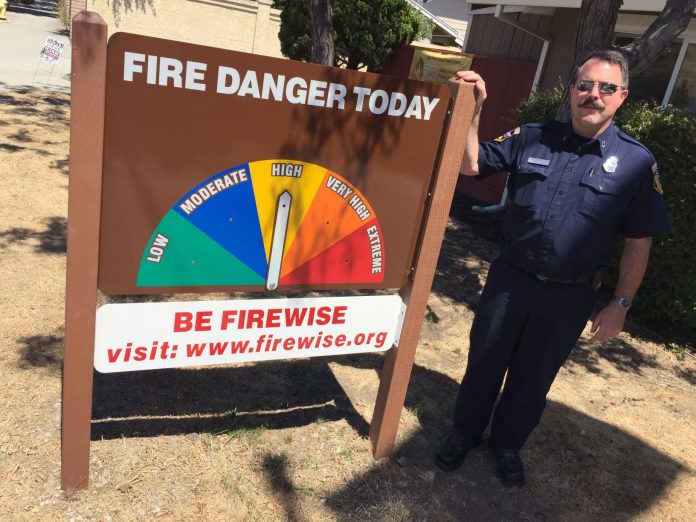This guest view is the first in a periodic series of upcoming op-eds on tips to prepare for wildfire season, which officially starts May 1 in Santa Clara County.
Most people believe that wildfires ignite homes through direct contact with flames, but it is rare to have a home ignite this way. Thanks to effective defensible space campaigns, very few homes are in direct contact with traditional wildland fuel models (e.g., uninterrupted fields of seasonal grass, flammable brush or tree canopies). The collective experience of our wildland firefighters suggests that homes most commonly ignite from airborne flaming brands and embers.
Flaming brands and embers can travel a mile or more ahead of the active front of a wildfire. Scientific research finds that up to 60 percent of wildland/urban interface home ignitions result from embers landing on flammable materials such as roofing or landscaping materials, or ember penetration into concealed spaces through vents and other structural openings.
Most of the activity that makes a home less vulnerable to ignition focuses on the home and its immediately surroundings. Defensible space preparations are part of the equation, but they do not address the ember threat. Our Ember Aware campaign is intended to educate people on the risks of ember cast and the actions they can take to reduce those risks, to encourage residents to harden their homes against embers and/or to maintain those ember-resistant features, and to practice ember-safe housekeeping and landscaping. You can learn more at emberaware.com.
In the coming weeks, we will provide a series of articles and tips on the topic. Make changes now to reduce the ember threat to your home. Tip number one: Stop shaking.
• The most reliable way to predict which houses will survive a wildfire and which will be destroyed is by looking at the roof.
• Houses with wood shake or shingle roofs are many times more likely to be destroyed during a wildfire. Using wood shakes or shingles for roofs in high fire hazard areas is like stacking hundreds of pounds of kindling on top of your home. During the hot summer months, the shakes or shingles can be nearly bone dry and easily ignited by embers. The embers come from pieces of burning material that can be lofted high into the air during a wildfire and travel a mile or more from the actual fire.
• Unfortunately, there is no effective, inexpensive long-term solution to the ember threat to wood roofs. We recommend replacing wood shake or shingle roofs with a rated, fire-resistant roofing material, such as asphalt composition shingles, metal, or concrete or clay tile. Although this can be expensive, it may well be the one thing that saves your home when the embers arrive.
Fire Marshal Dwight Good serves the Morgan Hill Fire Department and South Santa Clara County Fire Protection District and the CalFire Santa Clara Unit. He has 24 years of fire service experience. He can be contacted at Dw*********@*****ca.gov.








